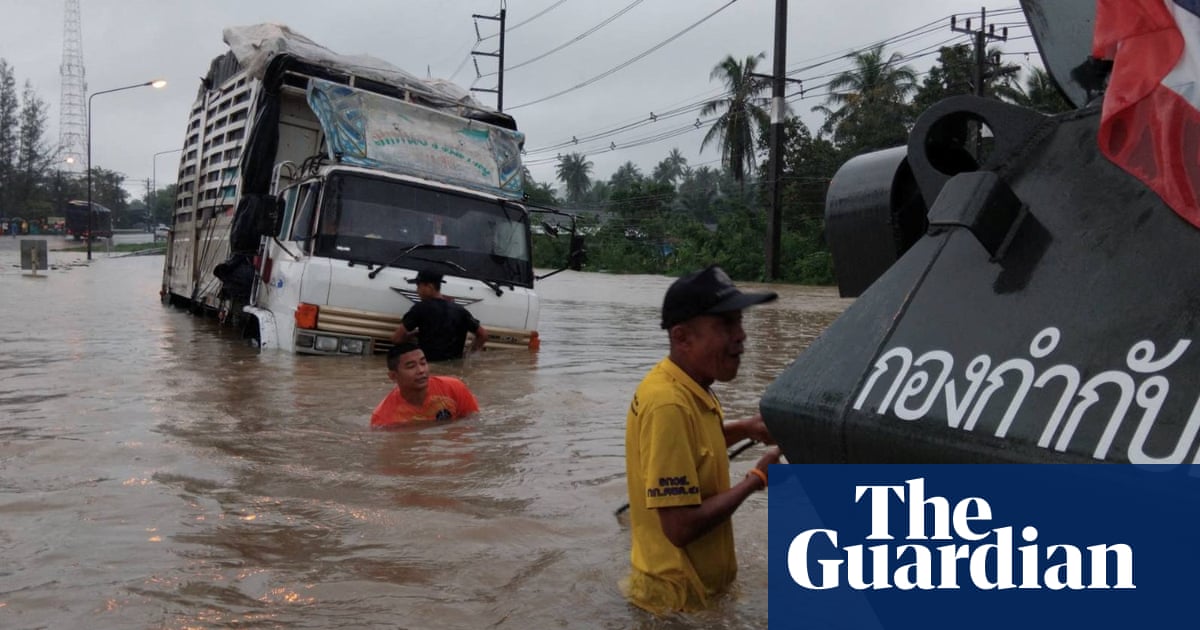Southern Thailand is grappling with severe flooding as torrential rainfall, driven by the north-east monsoon, continues to affect the region. During the north-east monsoon, which runs from November to March, winds from the north-east pick up moisture from the Gulf of Thailand and deposit it as heavy rain across the islands in the gulf and into exposed eastern parts of Thailand’s southern peninsula.
While high rainfall totals in southern Thailand are not unusual at this time of year, this year’s has been significantly above average. Ko Samui, Thailand’s second largest island, has recorded 571mm (22.48in) of rain this month – approximately 375% of the December average – with nearly a third of the month yet to go. In the nearby province of Nakhon Si Thammarat on the mainland, another weather station has surpassed 1009mm, more than four times the December norm.
On top of November’s above-average rainfall totals, December’s deluge has resulted in severe flooding in five provinces, displacing thousands of people as buildings have collapsed.
Spain’s Canary Islands have been experiencing a series of extreme weather events in recent days, with December temperatures soaring to the highest levels recorded in 100 years, with many places experiencing temperatures above 30C (86F) These high temperatures have been intensified by a weather phenomenon called a calima (or “blood-rain” when mixed with rainfall).
Calima occurs when Saharan dust is swept into the region by strong winds, giving the skies a striking reddish hue. These dust particles, suspended in the air, have trapped heat, exacerbating the already high temperatures, and reduced visibility to as low as 1,000 metres (3,280ft). Local authorities have advised local people and visitors to stay indoors as the dust cloud lingers, as it can trigger respiratory issues and irritation to the eyes.
after newsletter promotion
Elsewhere, Cyclone Chido has continued its destructive path, making landfall in Malawi on 15 December as a moderate tropical storm with wind speeds of 124mph (200km/h) and heavy rainfall. As of 18 December, the storm has killed an additional seven people and injured a further 16. The cyclone has damaged more than 250 houses in the region, swept roofs off buildings, and blocked roads.
Source: theguardian.com



















